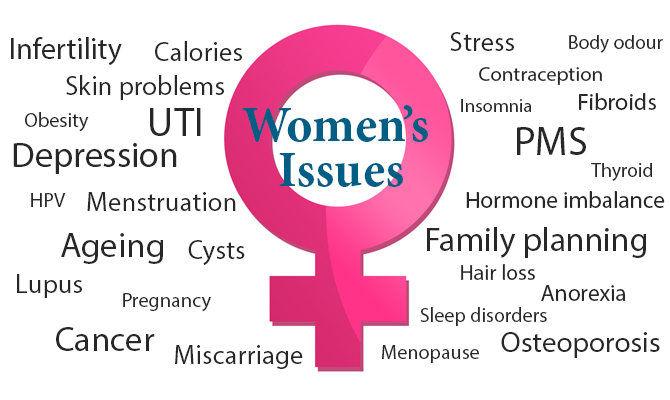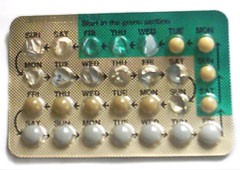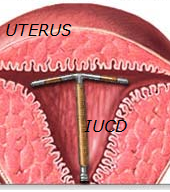Common Scenarios in our society today: A- Mrs AA is very disturbed when she is told she is pregnant again as she just gave birth through a Caesarean section four months ago. She is contemplating terminating her current pregnancy as she is not emotionally and physically prepared. B- Mrs BB feels very drained with her work as an executive and responsibilities at home with 3 small children. She is wondering if she can find ways to help her enjoy some time for herself. The above scenario is common. Unplanned pregnancy can be troublesome and create a major burden on the couple and the family. Some even resort to terminating the pregnancy illegally. This could give negative impact on the overall cost to the family, society and healthcare system. Family Planning It is an essential part of constructing a healthy family unit. Many young couples who have just started family life often face conflicts in their relationship with each other and family members. Adjustment to the new life requires time. This is compounded by financial difficulties. It is important that a family unit is based on trust, love and security. Hopefully it will help to reduce domestic violence, child abuse and even child abandonment. What is ‘family planning’? It is an agreement by a couple to regulate the number and spacing of children they would like to have. The number of children should be determined in accordance to affordability, physical, emotional and mental status of both partners and other family members. Spacing provides time for the mother to recover physically, mentally and emotionally. It also allows the child to attain her right to affection, childcare and importantly breastfeeding for at least one to two years. How to plan a family? Many contraceptive methods are available and some could even be bought from any pharmacy. However, there are also natural methods which are easy and free to use. The type of contraception is selected based on: • Physical fitness of the woman and partner. Some may have diseases which will make certain type of methods dangerous for the user. • Response to the method used. Some may develop side effects. • Desire for temporary or permanent contraception. Some may just want to space the pregnancies for optimum recuperation. • Affordability of the couple. Temporary contraceptive methods A- There are drugs which contain hormones used for this purpose. The administration varies: a. Taken orally e.g. Oral Contraceptive Pills b. Injectables e.g. Injection of Depo-Provera three monthly c. Implants e.g. Implanon for 5 years Oral Contraceptive pills (OCP) are quite popular. There are many brands available providing varieties to suit the user. There are ultra- low dose, low dose and standard dose pills (dose refer to the amount of hormone oestrogen) which basically differ in packaging, price and also side effects, but their efficacies are similar with a 99% success rate. It may be inconvenient for some as it has to be taken daily, but it provides benefits other than contraception. For instance, it may help reduce menstrual pain and flow. It regulates the cycle, and thus useful for women who have irregular menstruation. However it should be used with caution in women who suffer from, have had history of blood clots in their veins (thromboembolism) or diseases like severe heart disease, systemic lupus erythematosus (SLE) or thrombophilia (protein C & S deficiency).
Injectable hormones are also widely used and easily accessible as it is available at any healthcare centres. It is as effective as the OCP. The injection of high dose progestogen hormone is required for every three months. The commonest side effect is amenorrhea. Some women also complain of weight gain due to increased appetite. It is suitable for women who have just given birth and intend to breastfeed their babies as it will not disrupt the production of breast milk.
Implants (Implanon) is a rod containing a contraceptive hormone that is implanted under the skin of the inner part of a woman’s arm. It can be used for a period of three years after which it needs to be removed. It is more expensive than other methods. Most women did not complain of many side effects except reduced menstrual flow. The efficacy is as good as tubal sterilization.  B – Other methods which are not incorporated with hormone but are a barrier such as condoms, female diaphragm and mechanical device like an intrauterine copper device (IUCD). Barrier devices allow quick reversal of effects thus women can be fertile again easily. The most popular is a condom as it is easily accessible and inexpensive. There are also female condom and diaphragm which have similar function like the male condom that is to prohibit sperms from entering the uterus. However, it requires highly motivated and informed users on how and when to use them for optimum efficacy. A failure rate resulting in pregnancy occurs in 20 to 25 per 100 condoms used.
B – Other methods which are not incorporated with hormone but are a barrier such as condoms, female diaphragm and mechanical device like an intrauterine copper device (IUCD). Barrier devices allow quick reversal of effects thus women can be fertile again easily. The most popular is a condom as it is easily accessible and inexpensive. There are also female condom and diaphragm which have similar function like the male condom that is to prohibit sperms from entering the uterus. However, it requires highly motivated and informed users on how and when to use them for optimum efficacy. A failure rate resulting in pregnancy occurs in 20 to 25 per 100 condoms used.
The extra advantage of barrier devices is protection to couples from any sexually transmitted infection like HIV, Hepatitis and Syphilis etc. Mechanical device is a commonly used uterine implant (womb), copper device (non- hormonal) known as IUCD. It is used for three years and has a high efficacy of more than 97%. The commonest side effects are irregular menstruation and pain at the initial time of insertion. The price is affordable; however this requires insertion and removal by a trained doctor. Another intrauterine device that can similarly be used is a ‘Mirena Coil’. It is an intrauterine system which is incorporated with a small amount of progesterone hormone. As it is inserted into the uterus, the hormone will only work within the cavity of uterus. The added advantage is the hormone helps to also reduce menstrual flow as it inhibits the endometrium from thickening.
Permanent Contraception (Sterilisation) It is an irreversible method and a form of surgical procedure. Couples who choose sterilisation should be very certain about their decision. The two common procedures are ‘female bilateral tubal ligation’ or ‘male vasectomy’. As both techniques require surgical intervention, the woman or man who is undergoing such procedure must know the risks associated with anaesthesia and surgery. The success rate is 99.7% but pregnancy is possible as a result of flaws in technique or regeneration of tissues reconnecting the tubes. Tubal ligation could almost always be performed with a laparoscopic approach nowadays as it gives many benefits to patients. The mini incision used during surgery will allow patients to recover faster with less complication like bleeding or infection thus able to go back to their routines quite instantly.
Conclusion Contraception using the most suitable method is an ideal way of achieving family planning .The method of contraception should be decided by the couple according to their desire and affordability. It is important to seek a doctor’s advice regarding suitability, safety, efficacy and complications of the contraceptive method chosen prior to use.
Prepared by: A/Prof Sharifah Sulaiha Syed Aznal, Associate Professor, Obstetrics and Gynaecology, International Medical University













